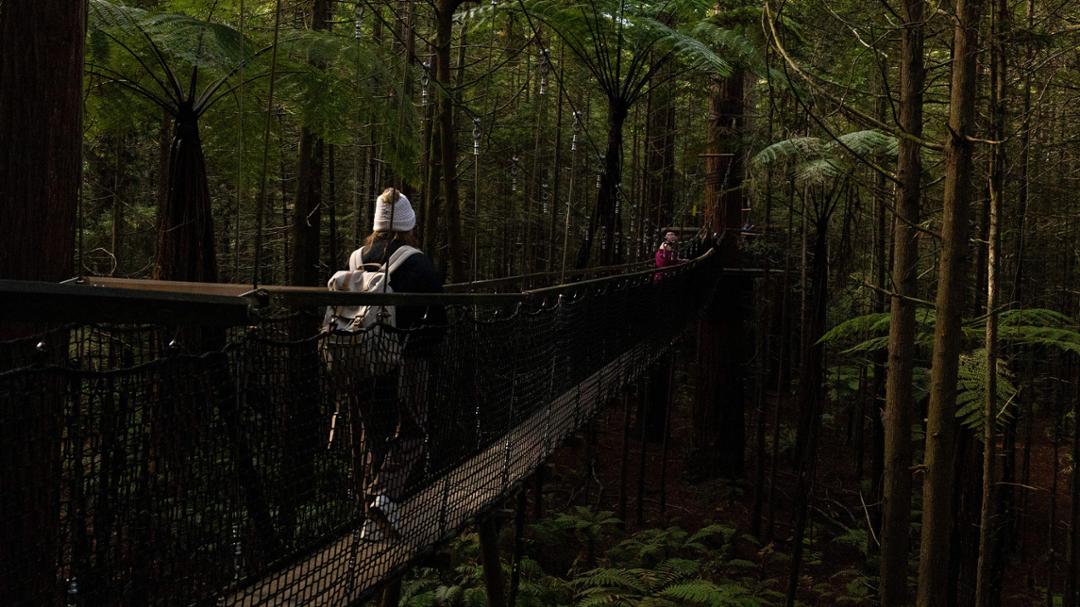A study abroad experience traipsing through the natural and urban portions of the isolated Oceanic country provided more than students anticipated.
Jordyn Ramirez never imagined she would traverse New Zealand while at Texas Tech University.
The fourth-year English major had never seriously considered studying abroad, save for a fleeting thought about continuing her Spanish studies in Spain. But she found a way to make the most of her last summer of undergraduate school, thanks to an email about the College of Media and Communication’s program that found its way to Ramirez through the Department of English.
“I was like, ‘Let’s take a risk, let’s try it out,’” she said. “It was one of the best things that I’ve ever done.”
In July, Ramirez found herself crisscrossing the islands of New Zealand for 20 days and becoming engrossed in its sights and culture. She was joined by 16 other Texas Tech students majoring in journalism and creative media industries as part of the Media, Tourism & Photography in New Zealand program.
Associate professor of practice Jerod Foster taught travel and cultural photography and associate professor Robert Peaslee taught the Media, Tourism & Culture course.
Olivia O’Rand, a third-year student, had previously learned under Foster in his Adventure Media course. The two were talking one day when Foster mentioned the study abroad program, which happened to be the same location where O’Rand dreamed of traveling to due to her love for photojournalism and all New Zealand had to offer.
She didn’t need much convincing at all.
“He told me, ‘We’re setting up to do a study abroad in New Zealand, and the study abroad there will be two or three weeks. Come and see me,’” O’Rand recalled. “I went, I picked up the information, and I immediately applied.”
Students completed reading assignments from Peaslee before the trip began, to be familiar with references throughout the program. The early days included three-hour-long lectures and instructions to collect interviews to be used for a final project before participants went out into their new surroundings.
“It was a lot at first, but then it was, ‘Go out, explore, see for yourself,’” said O’Rand. “The only thing we were really told to do was come back with photos that we could use.”
The program began on New Zealand’s North Island, with the group meeting in the scenic yet uncommonly bustling Auckland, the country’s most populous city. Next, they traveled south through Rotorua, got a taste of home in the mid-sized city of Hamilton, and visited the windy capital city of Wellington, stopping at the Hobbiton filming location and exploring the Tongariro Alpine Crossing.
After crossing over to the South Island, they disembarked at the waterfront adventure hub of Queenstown before taking in the sunset at Te Anau, the gateway to Fiordland National Park and Milford Sound.
Harnessing the Camera
Foster and Peaslee’s passions for the courses they led and penchants for hands-on learning provided huge boosts for the students, especially as several entered the program without extensive, intimate knowledge of the cameras they worked with.
For third-year student Chad Williamson, the diverse range of scenery found throughout New Zealand posed numerous opportunities to improve his skills. The creative media industries student had mostly practiced out in nature since switching from mechanical engineering.
Much of his development occurred in the urbanscape, where his approach changed to having more patience from wandering around and snapping the quick, overtly intriguing shots before.
“Foster said whenever you’re in a city or an urban area where you’re trying to get people as your subject, it’s almost like hunting,” he said. “You have to just sit there and wait for the perfect person to step in the perfect frame.”
While New Zealand townsfolk slept, Texas Tech students who had just arrived in their area were walking the streets, led by Foster, waiting for golden hour after sunrise.
Williamson described the moments before sunrise spent in pitch-darkness, with streetlights and faint glimmers of light as a photographer’s only resource.
“Maybe it was a cool building on the left, and then an alley that was lit up,” he recounted. “Then something else appeared on the right, and you had to wait for the person to get into that alley light, while just sitting there on the side of the road.”
The importance of lighting was far and away the most common lesson students gleaned from Foster’s teaching.
O’Rand recalled going on walks with Foster and the professor randomly pointing out moments of great lighting and urging someone to take a picture, which became a lasting memory for her.
Creative media industries student Jackie Peters said her photography skills took a massive leap over the course of the program.
“He taught me so much about composition lighting and even just the times of day. Everyone talks about golden hour, but there’s also blue hour, which is before the sun rises,” Peters said of Foster.
“We’d be standing somewhere, and he would start talking to me about what we’re seeing and how we can capture that in a certain way. Those little conversations, as well as feedback on my pictures that he would give, were so helpful.”
Ramirez learned about lighting’s impact in terms of its presence in a photo and how photographers can highlight specific elements in a scene. Conversations illustrating how photojournalism can tell stories, just as the subject of English does, helped her feel more comfortable in an environment where she was the only person not studying creative media industries or journalism.
“Seeing those lines be drawn between the two made me realize that I could bring a different perspective to the program, and it excited me to see how I looked at it differently,” said Ramirez.
O’Rand said the beauty of the landscape forced her to familiarize herself with her camera to get everything out of the trip she wanted.
“It presented me with challenges I needed to figure out the answer to if I wanted to get that shot, because I’m never going back,” she said. “I mean, what are the chances? It’s a once-in-a-lifetime experience, I’ll never be in this spot at this time with these people again; I need to be able to get the shot.”
While critical of her own work, O’Rand hoped the authenticity of what she saw was evident in the pictures she took.
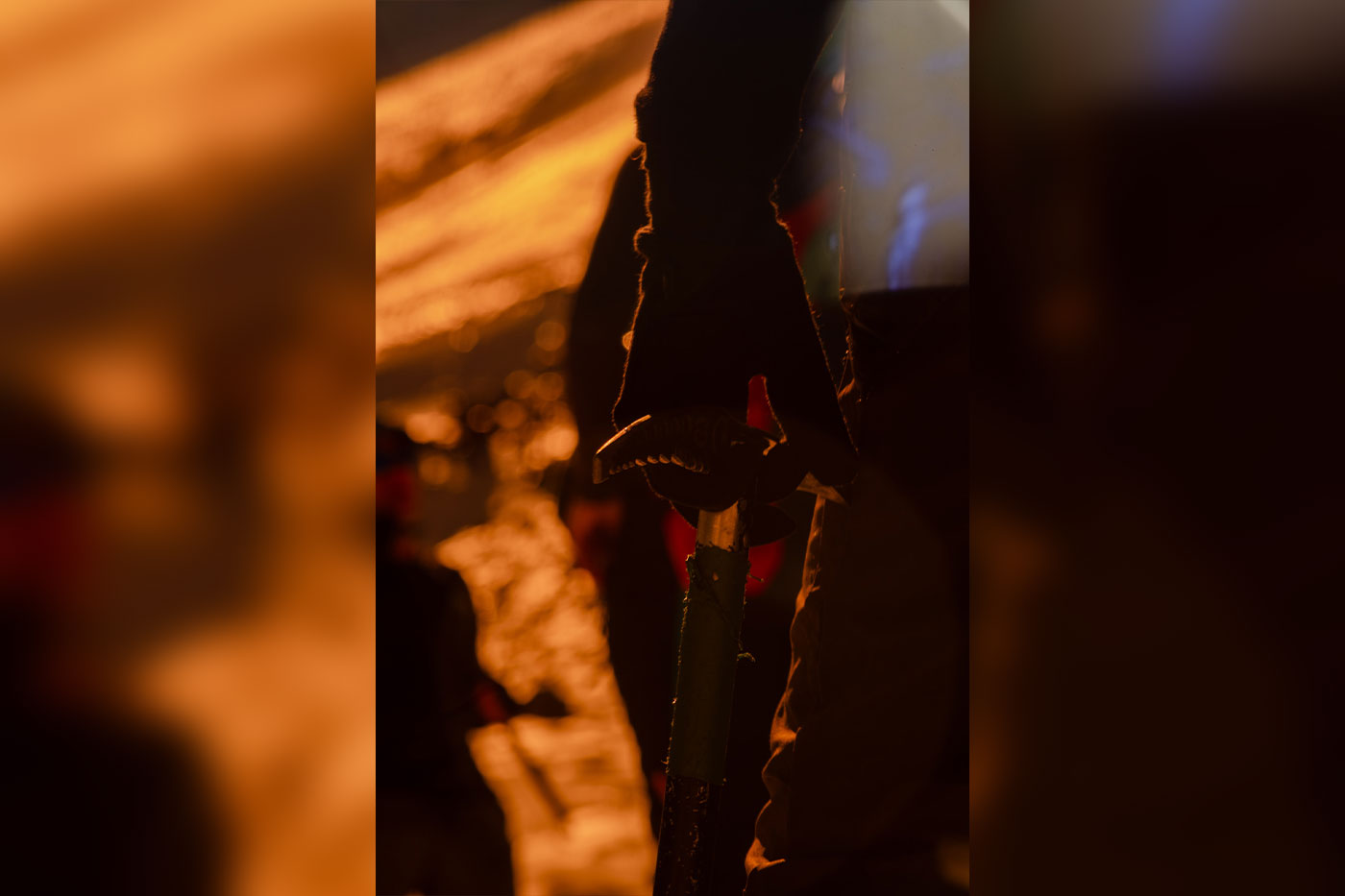
She found the most success at the Tongariro Alpine Crossing. There, she got experimental, taking a moment to capture the scene of students geared up with crampons, helmets, and ice picks through the lens of her sunglasses.
“I don’t think I looked at them that night,” O’Rand said. “We were all way too tired to look at pictures that night, but the next day I looked at it and I was like, ‘If I don’t get anything else, I’m OK.’”
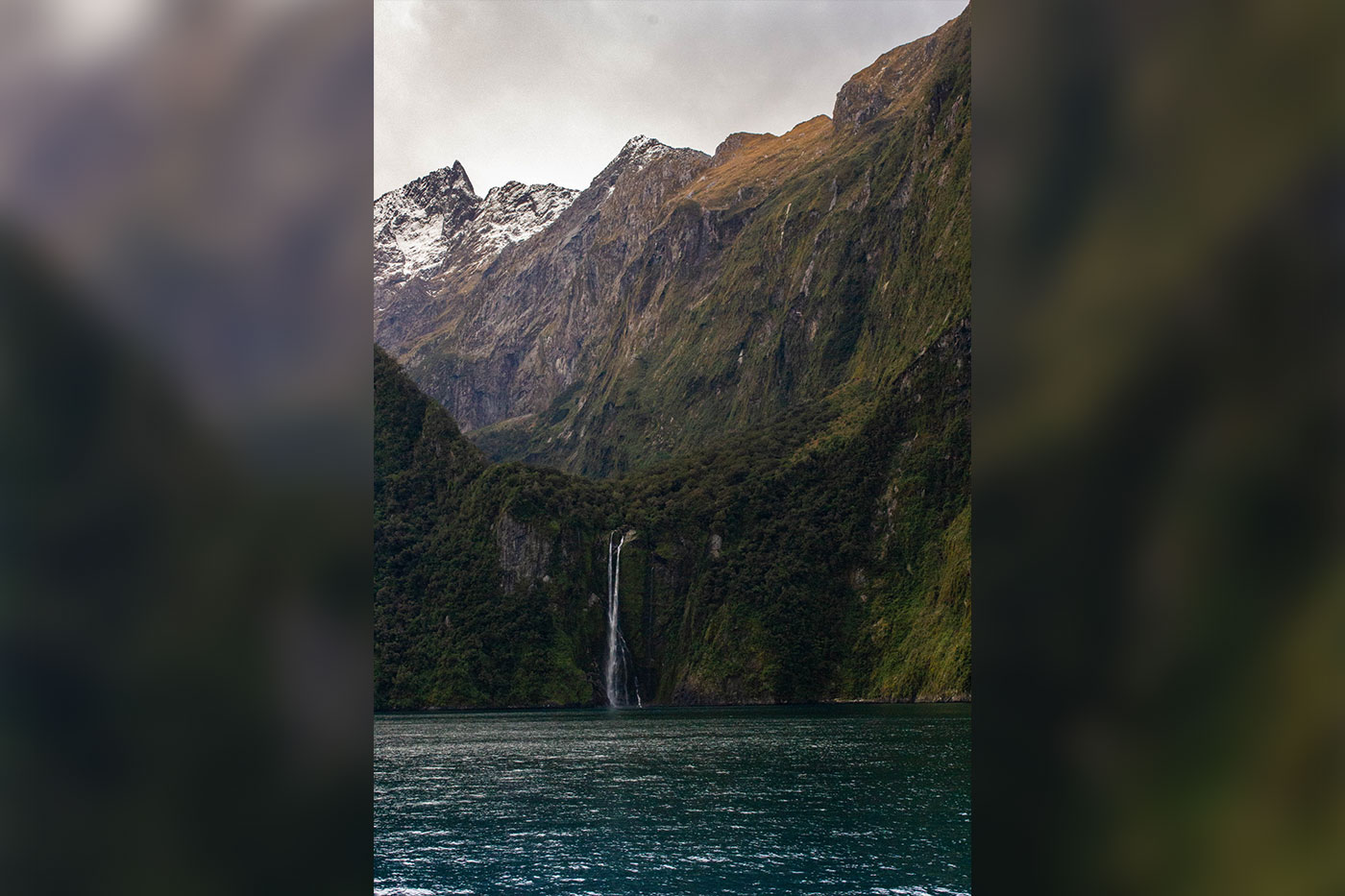
For Ramirez, her standout photo was one she’d forgotten she’d taken at Milford Sound when she snapped photographs of waterfalls after traveling through a fjord, a long, narrow stretch of sea flanked by steep cliffs. She had never seen anything like it, and the moment triumphed over the back-of-the-head thoughts that told her taking photographs meant she wasn’t present and in the moment.
“If anything, it was making me more present because now I’m paying attention to the lighting, I’m paying attention to the shadows, I’m paying attention to dimensions within where I am that I wasn’t paying attention to before,” Ramirez said.
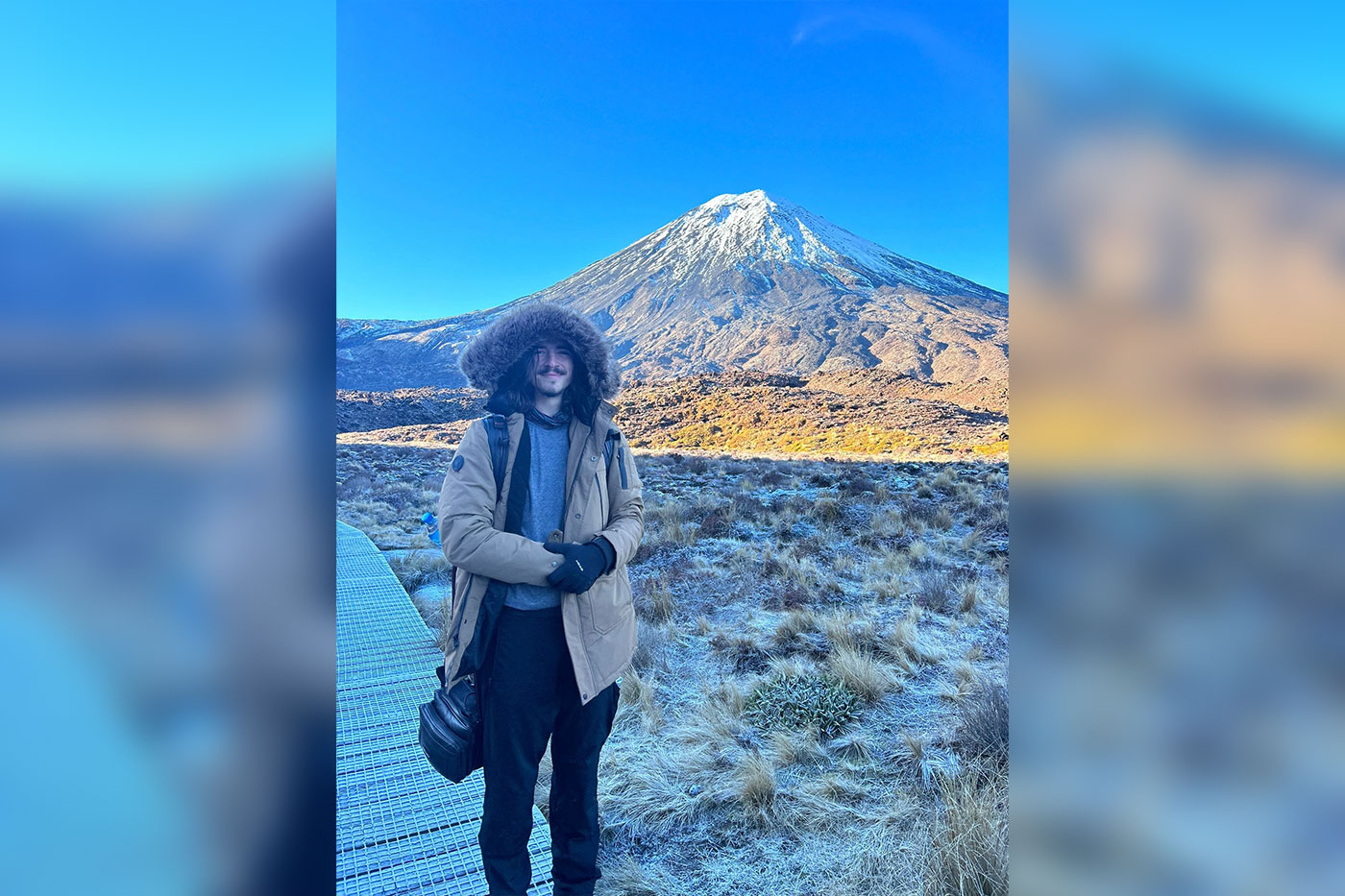
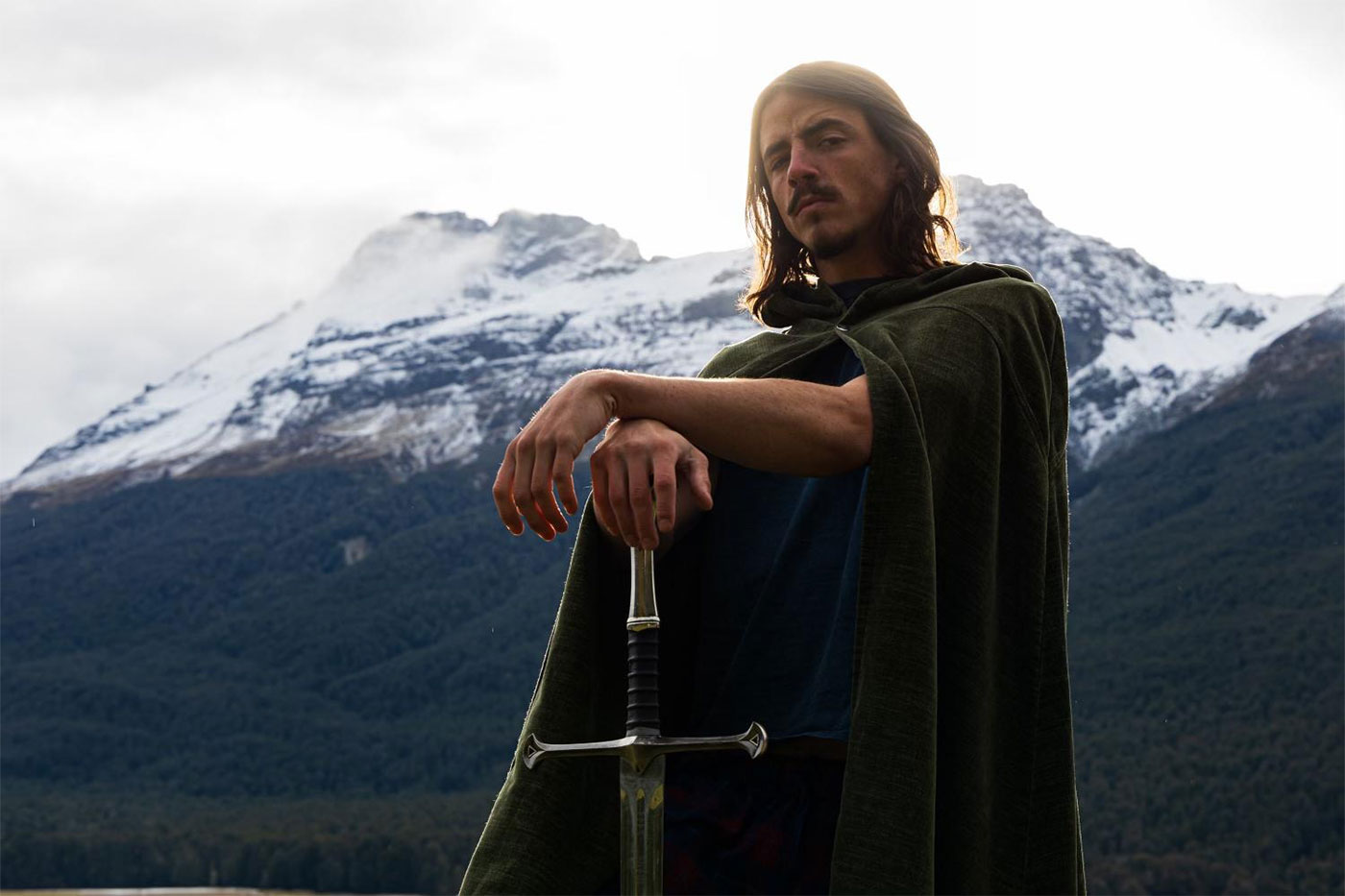
Embracing the Role of Tourist
It’s rare for most to visit the setting of a pop culture production that affected them the way Williamson was enthralled by the “Lord of the Rings” film trilogy, which was shot simultaneously in Wellington, Queenstown, and over 100 other locations around New Zealand.
The chance to not only get an in-depth look at those spots but have a camera with him to crystallize those moments forever was not lost on Williamson.
“I have a portfolio of the Shire (filmed in Matamata) and Mount Doom (Tongariro National Park) and those are some of the best pictures I’ve taken, and it’s of locations that I grew up watching,” he said. “It’s a really, really, really cool connection from something that I loved then to something I love now.”
Williamson found it hard to put into words other takeaways beyond the euphoria he felt seeing the real Middle-earth.
Viewing firsthand how the “Lord of the Rings” books and subsequent movies impacted an entire country through the multiple locations the group visited also helped Ramirez better explain the “why” behind the importance of teaching English.
“That was an expectation that was completely exceeded because I thought I was just going to get a glimpse of that, but I got a full immersive experience of how much “Lord of the Rings” means to people,” Ramirez said.
Though she hadn’t yet read the books, her time in New Zealand highlighted the need to show future students the impacts of dreams chased and achieved and what stories written by individuals can accomplish on behalf of a large group of people. Ramirez also described seeing the gargantuan role film-based tourism plays in the country as surreal.
Peters, who aspires to pursue film, said she became immersed in not only the various film locations around the country but also the overall film culture. Tour guides who had acted in “Lord of the Rings” described the process of making big-budget movies in small localities.
Interactions with locals around New Zealand showcased the values most cherished in each city, and the most apparent of those experiences occurred in Murupara at the Kohutapu Lodge.
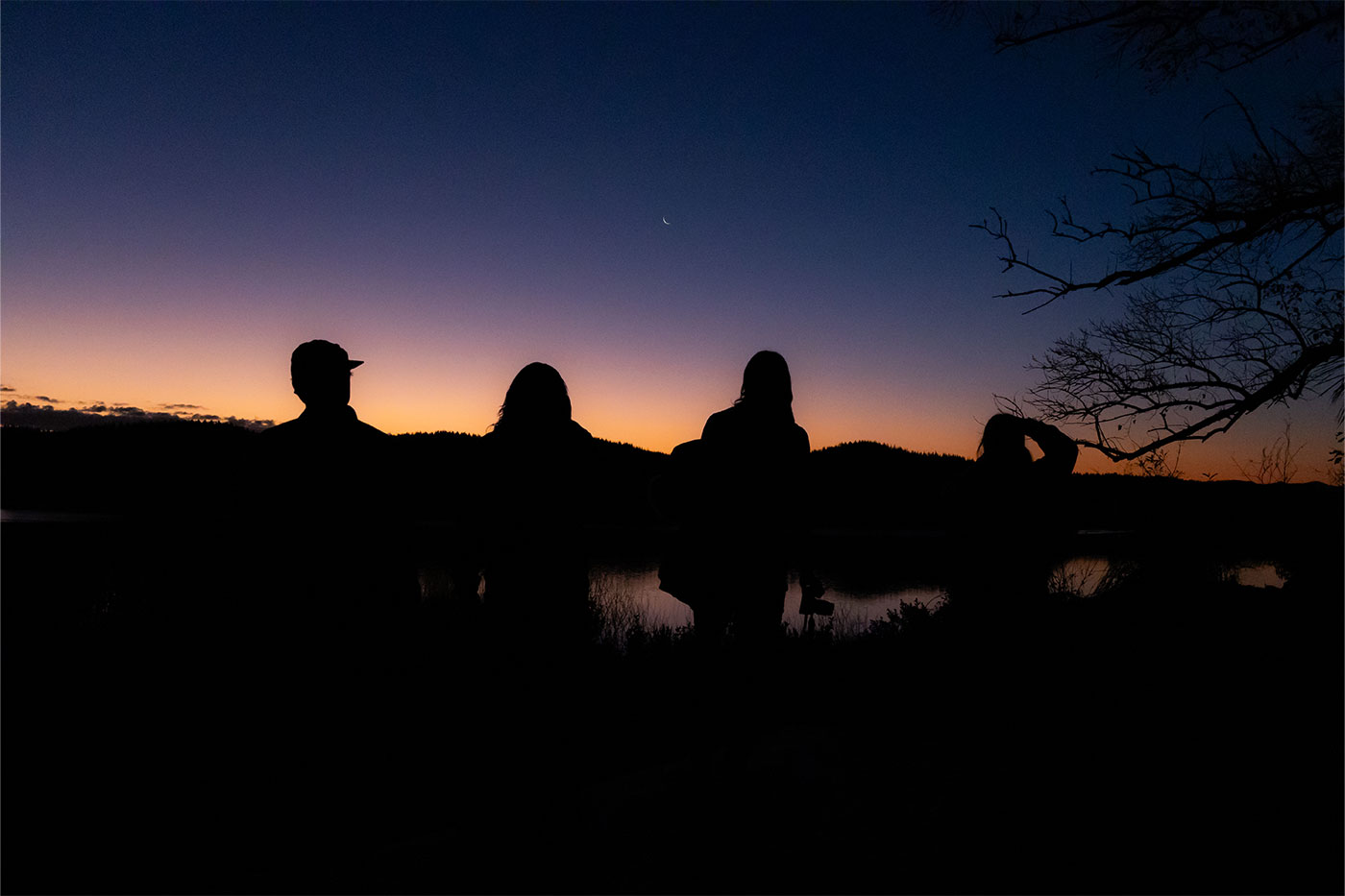
Students stayed in a lodge overnight, learned about indigenous Māori culture, and toured the Kaingaroa Forest, one of the largest human-made forests in the southern hemisphere spanning over 1,100 square miles. They also participated in cultural stick games, saw centuries-old rock art, and watched the preparation of a hangi meal and a performance of the traditional haka dance, known worldwide thanks to New Zealand’s All Blacks national rugby team.
“It was all kinds of stuff that blew my mind about how beautiful it all was,” said Peters. “Every single city we went to was very different, but you could tell it was New Zealand.”
Ramirez said visiting with the Māori was the most immersive cultural experience she’d ever had and added a new dimension to the trip.
“We got to see the land, and we got to see some of the locals, some of the other tourists,” Ramirez said. “Now we get to see the people that don't get as much exposure, the people who have had the most hardship within the country and how resilient they are, and how they represent the resilience of the entire country.”
The Kohutapu Lodge is situated in a less economically advantaged part of New Zealand that isn’t frequented as often by tourists. Its operators strive to provide experiences representative of the contemporary lives of New Zealand Māori.
Talking about the students’ time in Murupara left O’Rand misty-eyed. It reminded her of the world’s vastness, which can be hard to grasp until people venture outside their immediate vicinity.
The experience was far from familiar to West Texas and strayed from the typical mindset of visiting a new place.
“A lot of times, when you go to tourist attractions, you’re looking for a spectacle,” said O’Rand. “We spent time not doing that. We were looking for authenticity.”
Authenticity was the theme of the trip, she continued. Though the students were tourists themselves, they were challenged to find the genuine everyday culture of New Zealanders, whether it be on the streets or interacting with the Māori.
Peaslee’s course gave students a new perspective on the eyes of a tourist and what makes certain attractions more popular, according to Williamson. Not only were they acting as tourists themselves, but they observed and interviewed others in the same role.
He noted that he saw only a few pieces of trash lying on the ground while walking around Auckland, New Zealand’s largest city. The cleanliness impressed him.
“What I really like about their culture is how regenerative and sustainable it feels,” said Williamson.
Peters added that various interactions displayed how connected the people of New Zealand were with each other, animals, and other parts of nature, which left a lasting impression.
“I also got to see that in a photography lens, just trying to capture that and bring it back to America to show my family and friends, ‘This is New Zealand. This is not just what I saw, but what I experienced,’” Peters explained.
Why study abroad?
Reflecting on the effect of the experiences in the program and with their professors, Williamson echoed O’Rand’s sentiments that studying abroad exposed him to new sights associated with filmmaking.
The tours of various film locations and sets combined with the educational aspects of studying abroad proved to Williamson that working behind a camera was exactly what he wanted to pursue.
Students recommended traveling overseas to add to their time at Texas Tech, with O’Rand referring to the opportunities for grants and scholarships that provide access to transformative experiences.
“There’s no reason not to at least try,” she said.
Returning home doesn’t mean the bonds formed abroad dissipate, either. The group recently held a family barbecue, according to Ramirez, who added that she’s been able to create new memories in Lubbock in addition to those that occurred thousands of miles away.
“You get to watch all these people experience something for the first time, and you get to come back and continue experiencing things for the first time,” she continued. “That's probably my favorite part, is that not only were we experiencing life together then, but we get to continue experiencing it together now.”

